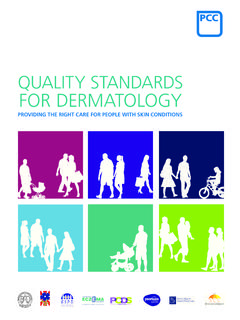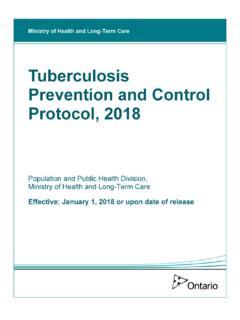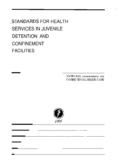Transcription of Assessment, Treatment, and Risk Management of Persons …
1 Assessment, Treatment, and Risk Management of Persons Who have sexually Offended: A Report to the connecticut Sentencing Commission Robin J. Wilson, , ABPP McMaster University, Hamilton, ON Canada Wilson Psychological Services LLC, Sarasota, FL USA June 22, 2017 connecticut Sentencing Commission .. Page 1 of 65 Department of Justice National Institute of Corrections Washington, DC 20534 DISCLAIMER RE: NIC Technical Assistance No. 17C1051 This technical assistance activity was funded by the Community Services Division of the National Institute of Corrections. The Institute is a Federal agency established to provide assistance to strengthen state and local correctional agencies by creating more effective, humane, safe, and just correctional services. The resource person who provided the onsite technical assistance did so through a contracted agreement, at the request of the connecticut Sentencing Commission, and through the coordination of the National Institute of Corrections.
2 The direct onsite assistance and the subsequent report are intended to assist the agency in addressing issues outlined in the original request and in efforts to enhance the effectiveness of the agency. The contents of this document reflect the views of Robin J. Wilson, , ABPP. Points of view or opinions expressed in the Technical Assistance report are those of the authors and do not represent the official opinion or policies of the Department of Justice. Upon delivery of the final Technical Assistance report to the agency that requested the assistance, the report becomes the property of that agency. The National Institute of Corrections will not distribute the report to non-NIC entities, or consider it an agency record under the Federal FOIA, without the express, written approval of the agency. connecticut Sentencing Commission.
3 Page 2 of 65 EXECUTIVE SUMMARY As part of its ongoing mandate to ensure public safety, the connecticut Sentencing Commission sought a review of practices regarding the assessment, treatment, and risk Management of Persons who have sexually offended. The Sentencing Commission is currently engaged in a wide-scale review of policies and practices in the state, specifically focused on ensuring evidence-based assessment and treatment services and the promotion of best practices. An evaluation and review was undertaken of sexual offender processes in connecticut ; specifically with respect to sentencing practices, assessment procedures, provision of treatment to sexual offenders in institutional and community settings, and methods employed to supervise and monitor offenders in community settings. This process also included a review of current practices regarding sexual offender registration.
4 To complete this evaluation, policy and practice documents were reviewed from the connecticut Department of Corrections, the University of connecticut Health Center, the Center for the Treatment of Problem Sexual Behavior (affiliated with The Connection, Inc.), the connecticut Board of Pardons and Paroles, and the connecticut Judicial Branch Court Support Services Division, among others (see Appendix I). Additionally, various key personnel were consulted, some individually and many during site visits in March 2010 that included a visit to Osborn Correctional Institution. An extensive review of the literature regarding the assessment, treatment, and risk Management of Persons who have sexually offended is provided, with sections indicating the relevance of this literature review to policy and procedure in connecticut . Recommendations are made regarding areas of policy and practice that the connecticut Sentencing Commission may wish to consider in furthering its goal of increased public safety and enhanced reintegration opportunities for released and supervised sexual offenders.
5 Many of these recommendations focus on maintaining adherence to prescriptions of the Risk-Need-Responsivity model (Bonta & Andrews, 2016) that underpins the majority of correctional programming and supervision endeavors in the United States, Canada, and other similar nations. Specifically, treatment providers and risk managers are encouraged to ensure that intensity of interventions matches level of assessed risk to reoffend, that treatment and supervision attend to identified criminogenic needs, and that services for Persons who have sexually offended are offered in a manner that reflects the individual case presentations of clients. With respect to the connecticut Sentencing Commission .. Page 3 of 65 latter point, institutional and community treatment providers are strongly encouraged to consider offering modified interventions to clients with special needs (intellectual and cognitive disabilities, serious mental illness, highly entrenched antisocial values and attitudes), as well as those clients demonstrating significant treatment interfering factors that pose barriers to success in treatment and on supervision.
6 Recommendations are also made regarding Management of technical violations. Specifically, probation and parole staff are encouraged to consider other options to address non-offense-related misbehavior while on supervision. Given the strong collaborative model already existing in connecticut , there are additional avenues of case Management that could be employed. Of note, involvement of victim services in routine case Management of sexual offenders is viewed as an example of best practice. Finally, recommendations are made regarding potential revisions to connecticut s sexual offender registration processes. Currently, most offenders are maintained on a publicly accessible registry for either 10 years or life; although a private law enforcement registry is also an existing option. Current registration standards are determined by an offense-based scheme.
7 The connecticut Sentencing Commission is encouraged to consider a risk-based scheme that would increase the use of the law enforcement registry for low to moderate risk offenders; saving the publicly accessible registry for higher risk offenders causing greater concern. Additionally, the Sentencing Commission is encouraged to consider options for relief and removal of sexual offenders from the registries, provided that they meet certain risk-based and treatment-based benchmarks. connecticut Sentencing Commission .. Page 4 of 65 INTRODUCTION The assessment, treatment, and risk Management of Persons who have sexually offended is of considerable interest to a wide variety of stakeholder groups, including legislators and policymakers, court and law enforcement personnel, corrections and community supervision staff, mental health clinicians, victim advocates, and the community-at-large, among others.
8 Many of these stakeholders have expressed concerns regarding the potential for sexual recidivism and other harms posed by offenders released to the community. As a consequence, most jurisdictions have enacted legislative frameworks to manage those risks. The past 40 years have been witness to significant growth in our understanding of the dynamics of sexual offending, the people who engage in these behaviors and how best to assess their risk for reoffending, and what treatment and supervision interventions are most likely to result in success. In this context, success may be defined as: ( 1) greater community safety, and (2) safe and humane reintegration opportunities for offenders returning to the community. connecticut connecticut represents a relatively small footprint geographically in the United States, but there are many areas in which it has outperformed in spite of its size.
9 Of particular importance to this report is the historical influence CT has had on sexual offender policy and practice. From an early point in contemporary sexual violence prevention, many noteworthy contributions have been made by either native Connecticutters or those who ultimately made the state their home. In the early 1980s, CT psychiatrist Suzanne Sgroi began publishing books about vulnerable populations; especially regarding treatment for survivors of sexual abuse. Although he began his career in his home state of Massachusetts, Nicholas Groth made many of his most important contributions to typological understandings and treatment methods for sexual offenders while he was in CT from 1976 onward. In the field of victim advocacy, there are few people with as big an influence as Gail Burns-Smith. A prestigious award established by the Association for the Treatment of Sexual Abusers is presented each year to the person who best embodies Gail s spirit and tenacity in ensuring rights for victims of sexual violence.
10 In regard to juveniles who have sexually offended, Jonathan Ross and Peter Loss of Forensic Mental Health Services of connecticut in New London were on the cutting edge before many practitioners around the country knew where that edge was. On the policy front, David D Amora started as a connecticut Sentencing Commission .. Page 5 of 65 leader in sexual offender treatment in CT, but has continued to influence the public policy aspect of the field across the country as Director of Special Projects for the nonpartisan Council of State Governments Justice Center. This report is intended to provide a comprehensive review of best practices in the assessment, treatment, and risk Management of Persons who have sexually offended. In each section, I have included a section entitled Relevance for connecticut . Finally, recommendations are made for policy and practice going forward.

















